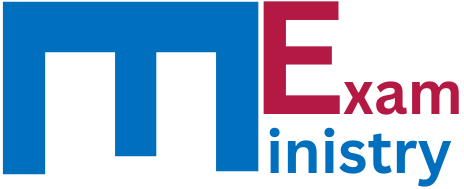Would you like to get the current JAMB Accounting syllabus to know what to study for JAMB Accounting exam?
In this library,
You will see the latest JAMB syllabus for Accounting this year and also download a Free PDF copy to know the topics where all your JAMB Accounting questions will be asked from.
ALSO SEE: JAMB SYLLABUS FOR OTHER SUBJECTS
Take note.
Expect about 40 questions in your JAMB Accounting exam from these topics listed below:
See JAMB Accounting syllabus with all the topics
The PDF version of this syllabus is included at the bottom of this post for your FREE and unlimited download.
1. Nature and Significance of Accounting
- a. Development of accounting (including branches of accounting);
- b. Objectives of bookkeeping and accounting;
- c. Users and characteristics of Accounting information;
- d. Principles, concepts and conventions of accounting (nature, significance and
- application);
- e. Role of accounting records and information.
2. Principles of Double Entry.
- Functions of source documents
- b. Books of original entry.
- c. Accounting equation.
- d. The ledger and its classifications.
- e. Trial balance.
- f. Types and treatment of errors and uses of suspense account.
3. Ethics in Accounting.
- a. Objectives.
- b. Qualities of an Accountant.
4. Cashbook.
- a. Columnar cashbooks.
- b. Discounts.
- c. Petty cashbook and the imprest system.
5. Bank Transactions and Reconciliation Statements.
- a. Instrument of bank transactions.
- b. e-banking system.
- c. Causes of discrepancies between cashbook and bank statement.
- d. Bank reconciliation statement.
6. The Final Accounts of a Sole Trader.
- a. Income statement (Trading and profit and loss account).
- b. Statement of financial position (Balance sheet).
- c. Adjustments:
- i. provision for bad and doubtful debt.
- ii. provision for discounts.
- iii. provision for depreciation using straightline and reducing balance methods.
- iv. accruals and prepayments
7. Stock Valuation.
- a. Methods of cost determination using FIFO, LIFO and simple average.
- b. The advantages and disadvantages of the methods.
- c. The importance of stock valuation.
8. Control Accounts and Self-balancing Ledgers.
- a. Importance of control accounts.
- b. Purchases ledger control account.
- c. Sales ledger control account.
9. Incomplete Records and Single Entry.
- a. Conversion of single entry to double entry.
- b. Determination of missing figures.
- c. Preparation of final accounts from incomplete records.
10. Manufacturing Accounts.
- a. Cost classification.
- b. Cost apportionment.
- c. Preparation of manufacturing account.
11. Accounts of Not-For-Profit-Making Organizations.
- a. Objectives of Not-For-Profit-Making organizations.
- b. Receipts and payments account.
- c. Income and expenditure account.
- d. Statement of financial position (Balance sheet).
12. Departmental Accounts.
- a. Objectives.
- b. Apportionment of expenses.
- c. Departmental trading and profit and loss account goods using FIFO, LIFO and simple average;
13. Branch Accounts.
- a. Objectives.
- b. Branch accounts in the head office books.
- c. Head office account.
- d. Reconciliation of branch and head office books.
14. Joint Venture Accounts.
- a. Objectives.
- b. Personal accounts of venturers.
- c. Memorandum Joint venture account.
15. Partnership Accounts.
- a. Formation of partnership.
- b. Profit and loss account.
- c. Appropriation account.
- d. Partners current and capital accounts.
- e. Treatment of goodwill.
- f. Admission/retirement of a partner.
- g. Dissolution of partnership.
- h. Conversion of a partnership to a company.
15. Introduction to Company Accounts.
- a. Formation and classification of companies.
- b. Issue of shares and debentures.
- c. Final accounts of companies.
- d. Interpretation of accounts using ratios.
- e. Distinction between capital and revenue reserves.
16. Public Sector Accounting.
- a. Comparison of cash and accrual basis of accounting.
- b. Sources of government revenue.
- c. Capital and recurrent expenditure.
- d. Consolidated revenue fund.
- e. Statement of assets and liabilities.
- f. Responsibilities and powers of:
- i. The Accountant General.
- ii. The Auditor General.
- iii. The Minister of Finance.
- iv. The Treasurer of local government.
- g. Instruments of financial regulation.
17. Information Technology in Accounting.
- a. Manual and computerized accounting processing system.
- b. Processes involved in data processing.
- c. Computer hardware and software.
- d. Advantages and disadvantages of manual and computerized accounting processing system.
Source: JAMB IBASS
Download JAMB syllabus for Accounting PDF now
Click on the button below the image to start your Free JAMB Accounting syllabus download immediately.

GOOD LUCK.
Did you encounter any issues downloading this JAMB syllabus for Accounting or want to say something about it? Comment below and someone will reply you.

Leave a Reply